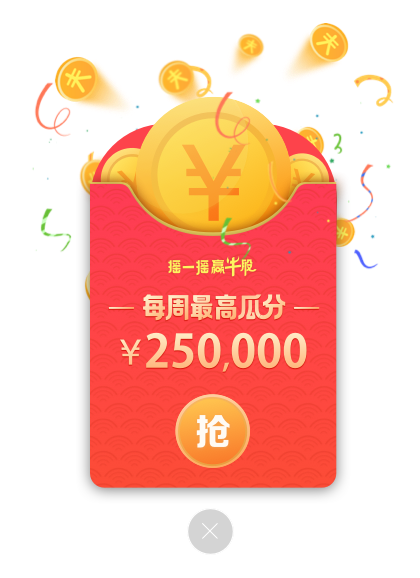原标题:卡塔尔大型LNG项目致竞争加剧
中国石化新闻网讯 据今日油价网2月22日报道,卡塔尔石油公司最近创下有史以来最大的LNG出口项目的新纪录。到2026年,该国将超越澳大利亚,再次成为全球最大的液化天然气供应国。由于疫情导致经济不确定,该合同的签订被推迟了一年,随着大规模扩张,市场可能会供过于求,而且正在等待其投资决定的其他项目的可行性也将受到威胁。
多年来,卡塔尔石油公司一直是全球液化天然气行业的实际领导者。实行自我禁令旨在通过防止供过于求来确保长期的竞争力。目前,卡塔尔的年产量为7700万吨(mtpa)。通过第一阶段的扩建,到 2026年,该国的产能将增至1.1亿吨。到2026年,在第二阶段工程完成后,产能将上升到1.26亿吨/年。
卡塔尔决定解除禁令是澳大利亚和美国竞争加剧的直接结果。此外,俄罗斯也制定了重大计划,加入了这场竞争。增加的天然气供应牺牲了卡塔尔石油公司的市场份额。据伍德麦肯齐公司研究总监贾尔斯·法勒(Giles Farrer)说,“卡塔尔正在追求市场份额。这项最终投资决定可能会增加其他预FID液化天然气供应商的压力,他们可能会发现卡塔尔在新市场站稳了脚跟。”
预计到2035年,全球需求将从2018年的3.15亿吨增加到5.6亿吨至6亿吨。预计到2035年,新产能将增加1亿吨至1.4亿吨。目前,正在等待最终投资决定的项目数量达到空前的100个,年产量为1.1亿吨。麦肯锡表示,这些项目需要达到每百万英热单位(MMBTU) 7美元的盈亏平衡价格才能保持竞争力。
在这方面,与竞争对手相比,卡塔尔的液化天然气行业由于生产成本低而具有强大的优势。世界上最大的天然气田——南帕尔斯/北穹顶的廉价原料气,极大地提高了卡塔尔石油的竞争力,尽管中东地区酷热难耐,然而,俄罗斯的北极气候使得液化成本保持在较低水平成为可能,加上廉价的原料气,Novatek的设施也极具竞争力。
这意味着,在目前预期的需求增长下,许多设想中的项目将无法完成。然而,有理由相信需求的增长可能超过目前的预期。首先,世界各地区可再生能源的增长增加了平衡电网的灵活性需求。目前,天然气是一个很好的竞争者,由于其广泛的可用性和相对较低的二氧化碳排放。
其次,碳排放上限降低了煤炭的长期竞争力,有利于减少大约50%二氧化碳排放量的天然气。中国是世界上最大的温室气体排放国,几周前刚刚启动了碳交易市场。
最后,随着工业化进程的加快,发展中国家正面临着一场环境危机。因此,有理由预计,对清洁气体的需求可以抵消更多的污染燃料,如煤炭,这在许多国家的能源结构中占主导地位。
然而,目前仍不清楚需求将以多快的速度增长。由于没有一个专门从事与欧佩克(OPEC)相当的天然气生产的组织,也没有一个与沙特阿拉伯相当的摇摆不定的生产商,使得液化天然气市场极不稳定。此外,高昂的前期成本和较长的开发时间使投资具有风险。当一个项目完成时,市场可能已经发生了变化。
因此,预计这100个预FID项目中的许多项目在未来十年无法达到终点线。
寿琳玲 编译自 今日油价网
原文如下:
Qatar's LNG Megaprojects Are Making Markets Increasingly Competitive
Qatar Petroleum’s recently set a new record for the largest LNG export project ever. By 2026, the country will once again become the world's largest supplier of liquefied natural gas by overtaking Australia. The signing of the contract was delayed for a year due to economic uncertainty as a direct consequence of the Covid-19 pandemic. With the mega-expansion, the market could be oversupplied for years and the feasibility of other projects that are awaiting their investment decision could be in jeopardy.
For years Qatar Petroleum was the de-facto leader of the global LNG industry. The self-imposed moratorium was intended to ensure competitiveness in the long-term by preventing oversupply. Currently, Qatar produces 77 million tons per annum (mtpa). With the first phase expansion, the country will increase its capacity to 110 mtpa by 2026. By 2026 this should rise to 126 mtpa after completion of the second phase.
Qatar’s decision to lift the moratorium is a direct consequence of increased competition by primarily Australia and the U.S. Also, Russia has entered the fray with major plans of its own. The added supply went at the expense of Qatar Petroleum which was losing market share. According to Giles Farrer, research director at Wood Mackenzie, “Qatar is pursuing market share. This FID (final investment decision) is likely to increase pressure on other pre-FID LNG suppliers, who may find Qatar secured a foothold in new markets.”
Global demand is expected to increase to between 560 mtpa and 600 mtpa by 2035 up from 315 mtpa in 2018. The expectation is that an additional 100 mtpa to 140 mtpa of new capacity will be required until 2035. Currently, an unprecedented amount of 100 projects with a production capacity of 1,100 mtpa are awaiting FID. According to McKinsey, these projects require a break-even price of $7 per million British thermal units (MMBTU) to maintain competitiveness.
In this regard, Qatar's LNG industry has a strong advantage due to low production costs compared to the competition. The cheap feed gas from the world's single largest natural gas field, South Pars/North Dome, significantly improves Qatar Petroleum's competitiveness despite the excruciating heat of the Middle East. Russia's arctic climate, however, makes it possible to keep liquefactions costs low. Coupled with cheap feed gas, Novatek's facilities are also highly competitive.
This means that many of the envisioned projects won’t make it to the finish line under the current expected demand growth. However, there are reasons to believe that demand could increase more than currently expected. First, the growth of renewables in all regions of the world increases the need for flexibility to balance the grid. Currently, natural gas is a good contender due to its wide availability and relatively low CO2 emissions.
Second, carbon ceilings decrease the long-term competitiveness of coal in favor of gas that emits approximately 50 percent less CO2. China, the world's largest emitter of greenhouse gasses, saw the launch of its carbon trading market just a few weeks ago.
Lastly, with rapid industrialization developing countries are facing an environmental crisis . Therefore, it is reasonable to expect that demand for cleaner gas could offset more pollutant fuels such as coal which is dominant in the energy mix of many countries.
However, it remains unclear how fast demand will grow. The absence of an organization dedicated to natural gas comparable to OPEC and a swing-producer comparable to Saudi Arabia makes the LNG market highly volatile. Also, the high upfront costs and long-development time make investments risky. By the time a project is completed, the market could have transformed.
Therefore, expect many of those 100 pre-FID projects to fail in reaching the finish line in the next decade.

APP专享直播
热门推荐
收起
24小时滚动播报最新的财经资讯和视频,更多粉丝福利扫描二维码关注(sinafinance)














